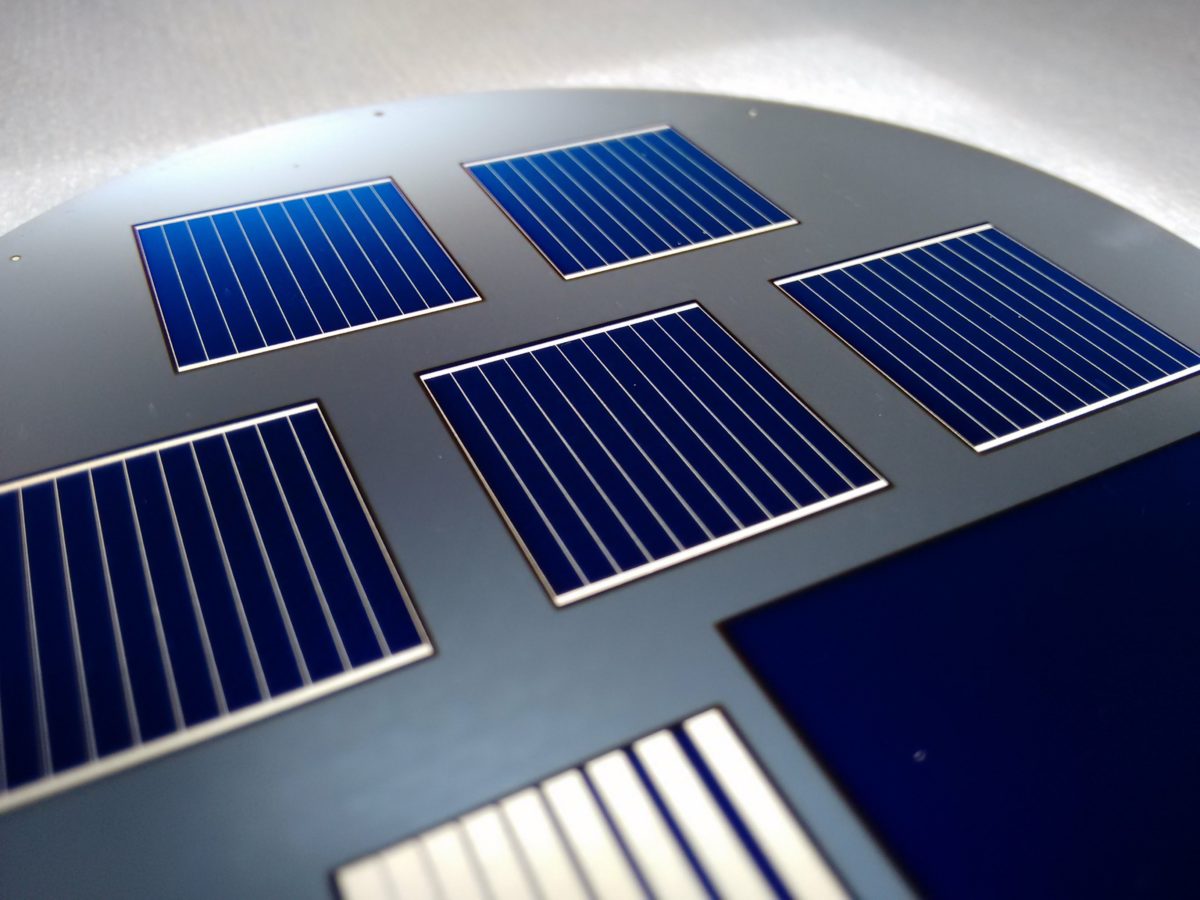Scientists at Switzerland’s École Polytechnique Fédérale de Lausanne (EPFL) claim to have reached 23.5% efficiency with a crystalline silicon heterojunction solar cell using molybdenum oxide as the hole-selective contact.
The researchers said molybdenum oxide (MoOx) – which has been used as a carrier-selective layer and crystalline silicon substrate in organic, inorganic and thin film solar cells due to its high work function and band gap – was used in a device structured in such a way to enable it to fully benefit from its improved transparency compared to p-type hydrogenated amorphous silicon. “MoOx can rival traditional contacting schemes in spite of its lower level of optimization,” the scientists said.
The thinner, the better
The EPFL team found the tiniest layers of the two compounds resulted in the best performance, as the thin contact stacks allowed for high selectivity and passivation and good charge-carrier transport. “The highest efficiency of this series was obtained for a 4nm-thick MoOx layer and a 6nm-thick intrinsic hydrogenated amorphous silicon ((i)a-Si:H) [layer],” the researchers wrote.
Photoluminescence imaging and high-illumination volatile organic compound measurements demonstrated the efficacy of the thinner layers, the scientists added.
Protecting passivation
In their view, a 4nm-thick MoOx film is thick enough to protect the passivation provided by the intrinsic hydrogenated amorphous silicon layer from sputtering damage while also maintaining sufficient selectivity to extract holes.
“Given that results with the thinnest (i)a-Si:H are quite spread, we processed another 4nm MoOx cell with [a] thicker (i)a-Si:H layer of 8nm, and … obtained a certified efficiency of 23.5%, with a remarkable fill factor [of] close to 82%,” the EPFL team stated. “This record efficiency for such [a] solar cell was obtained without any masking step or photolithography and used a low-temperature Ag [silver], screen-printed metallization, inducing around 3% of shadowing.”
The researchers are now planning to further reduce the thickness of the molybdenum oxide layer.
“In addition, investigating the industrial feasibility and long term stability of such devices will be required before any large scale deployment of this technology can be envisaged,” they added.
The findings of the research are described in the paper 23.5%-efficient silicon heterojunction silicon solar cell using molybdenum oxide as hole-selective contact, published in Nano Energy and on the ScienceDirect website.
This content is protected by copyright and may not be reused. If you want to cooperate with us and would like to reuse some of our content, please contact: editors@pv-magazine.com.




1 comment
By submitting this form you agree to pv magazine using your data for the purposes of publishing your comment.
Your personal data will only be disclosed or otherwise transmitted to third parties for the purposes of spam filtering or if this is necessary for technical maintenance of the website. Any other transfer to third parties will not take place unless this is justified on the basis of applicable data protection regulations or if pv magazine is legally obliged to do so.
You may revoke this consent at any time with effect for the future, in which case your personal data will be deleted immediately. Otherwise, your data will be deleted if pv magazine has processed your request or the purpose of data storage is fulfilled.
Further information on data privacy can be found in our Data Protection Policy.